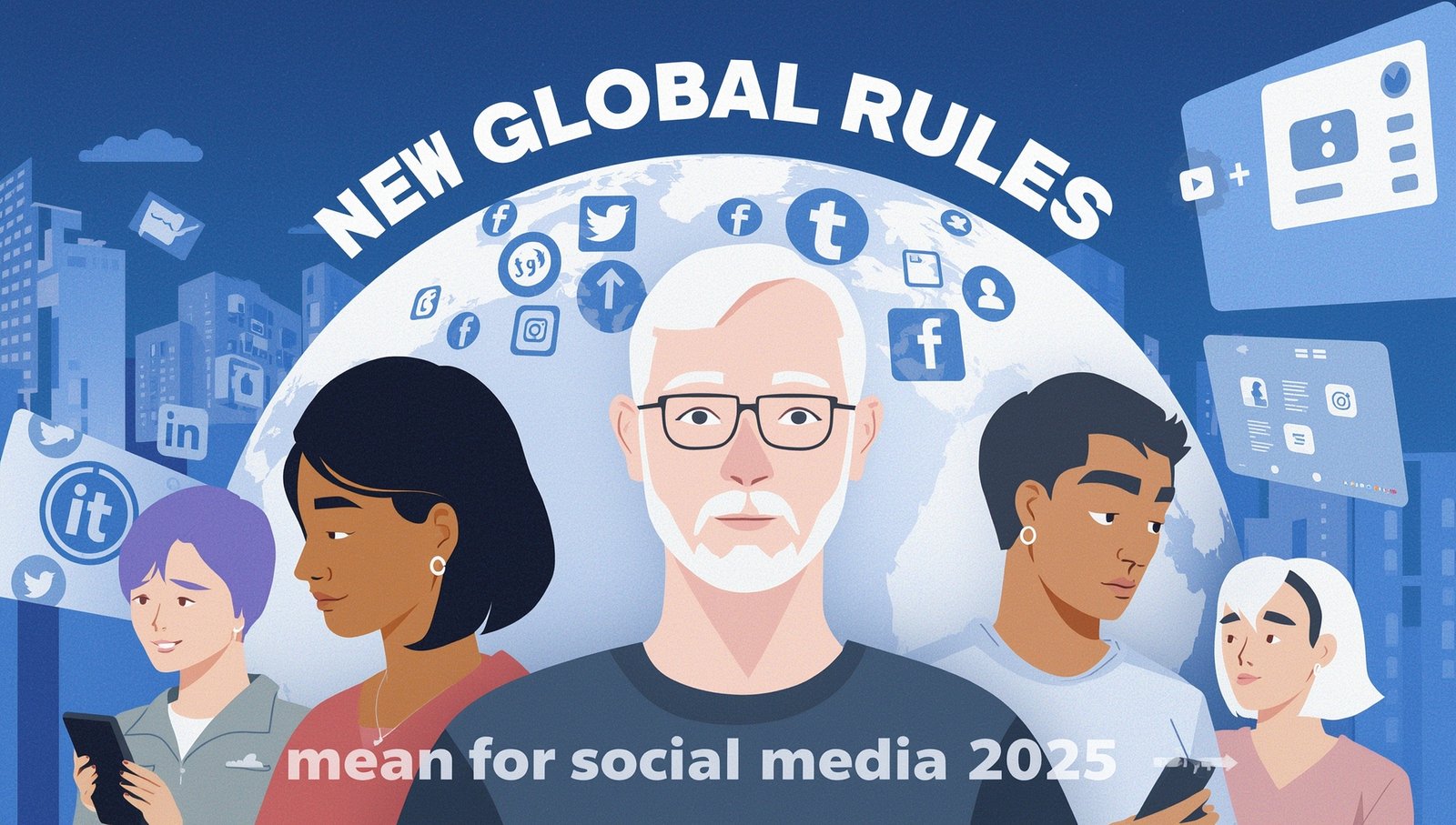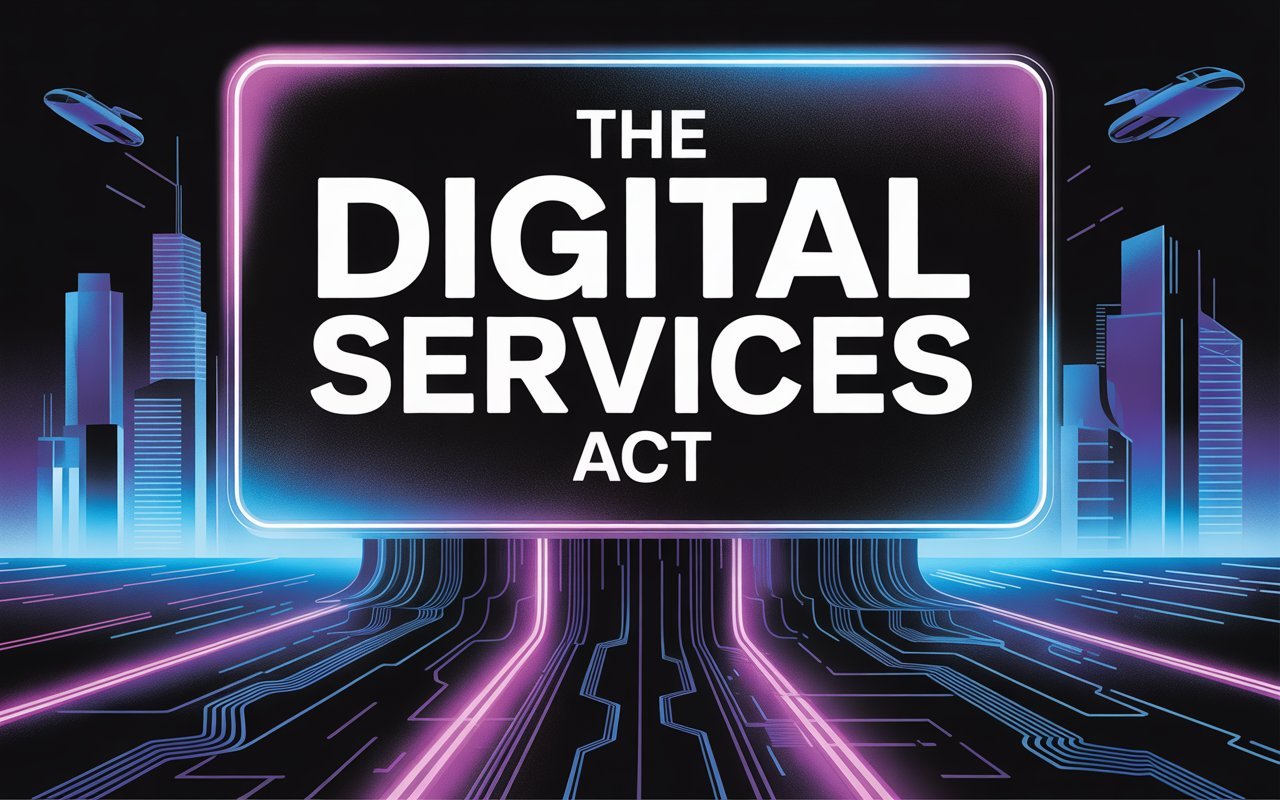 In 2025, regulators in every major market are converging on tougher standards for platforms and advertisers—so the New Global Rules mean for Social Media tighter algorithmic transparency, clearer ad disclosures, stricter youth protections, and faster, documented moderation. Expect more choice over feeds (including options to reduce personalization), visible labels on political and sponsored content, and hard limits on targeting sensitive attributes or minors. Platforms are being pushed to publish detailed transparency reports, offer appeal pathways for takedowns, and maintain auditable records of how content and ads are served. For brands, this shifts compliance from a legal checkbox to a growth lever: campaigns that prove consent, age suitability, and honest labeling gain distribution and trust, while noncompliance risks demotion, removals, fines, and reputational damage. Practically, teams need global-local playbooks: standardized disclosures and creative templates, region-specific privacy notices, age-appropriate defaults, and metadata that makes claims verifiable. Build cross-functional governance (legal, paid media, creator teams), log all targeting and approvals, and stress-test escalation/appeal workflows before launches. In short, 2025 rewards disciplined, transparent marketers—the ones ready to show their work.
In 2025, regulators in every major market are converging on tougher standards for platforms and advertisers—so the New Global Rules mean for Social Media tighter algorithmic transparency, clearer ad disclosures, stricter youth protections, and faster, documented moderation. Expect more choice over feeds (including options to reduce personalization), visible labels on political and sponsored content, and hard limits on targeting sensitive attributes or minors. Platforms are being pushed to publish detailed transparency reports, offer appeal pathways for takedowns, and maintain auditable records of how content and ads are served. For brands, this shifts compliance from a legal checkbox to a growth lever: campaigns that prove consent, age suitability, and honest labeling gain distribution and trust, while noncompliance risks demotion, removals, fines, and reputational damage. Practically, teams need global-local playbooks: standardized disclosures and creative templates, region-specific privacy notices, age-appropriate defaults, and metadata that makes claims verifiable. Build cross-functional governance (legal, paid media, creator teams), log all targeting and approvals, and stress-test escalation/appeal workflows before launches. In short, 2025 rewards disciplined, transparent marketers—the ones ready to show their work.
Europe at the Forefront: The Digital Services Act (DSA)

Europe’s DSA is now setting the pace for platform governance. Governance in 2025: it bans targeted ads to minors and the use of sensitive data for profiling, forces very large platforms to publish standardized transparency reports and “statements of reasons” for takedowns, and requires a non-profiling option for recommender systems so users can choose feeds that aren’t tuned by behavioral data. It also tightens disclosure and audit duties—annual risk assessments, independent audits, and ad repositories—while opening platform data to vetted researchers via a new delegated act, giving regulators and academics visibility into systemic risks. Fresh guidance finalized in July 2025 clarifies age-appropriateness and age-assurance expectations, and—running in parallel with Europe’s Media Freedom Act—very large platforms must notify recognized media before removal in many cases, shaping moderation workflows across news distribution. For advertisers and creators, the New Global Rules mean for Social Media more friction upfront (documentation, age suitability, targeting limits) but fewer downstream risks: compliant campaigns travel farther, while noncompliant tactics face demotion, removals, and penalties across the EU market.
Scope and enforcement:
The DSA applies to the full stack of intermediaries that touch user-generated content in the EU—mere-conduit and caching services, hosting services, online platforms (like social networks, marketplaces, app stores), and the largest tier, Very Large Online Platforms and Search Engines (VLOPs/VLOSEs) that reach roughly one-tenth of the EU population. Obligations scale with size and risk: all services must offer notice-and-action tools, publish clear terms, and explain takedowns with “statements of reasons”; platforms must enable user appeals, prioritize trusted flaggers, verify traders, keep ad repositories, and provide at least one recommender option that isn’t based on profiling; VLOPs/VLOSEs face the heaviest duties—annual systemic-risk assessments (e.g., disinformation, protection of minors), independent audits, stronger ad transparency, and vetted data access for researchers. For marketers and creators, these contours are what the New Global Rules Mean for Social Media in practice: stricter targeting limits (especially for minors and sensitive data), auditable ad disclosures, and more accountability for how content is amplified.
Enforcement is dual-track. National Digital Services Coordinators handle most services, coordinating cross-border cases through a formal cooperation system, while the European Commission directly supervises VLOPs/VLOSEs. Authorities can demand information, conduct inspections, order interim measures, accept binding commitments, and issue non-compliance decisions. Penalties are designed to bite—fines can reach a significant share of global turnover, with periodic penalty payments to force remediation—while persistent breaches risk service restrictions. In short, scope defines who must do what, and enforcement ensures they actually do it—turning compliance into a strategic baseline rather than a nice-to-have.
Major updates in 2025
In 2025 regulators delivered several landmark changes that show precisely what the New Global Rules Mean for Social Media: the EU adopted a Delegated Act giving vetted researchers structured access to formerly non-public platform data, the Commission published clearer age-assurance guidance and began piloting privacy-preserving verification approaches, and the UK (and other jurisdictions) moved to enforce robust age checks and tighter child-safety duties — all alongside stronger transparency, ad-repository, and algorithm-accountability requirements for the largest platforms. Together these updates mandate non-profiling feed options, standardized transparency reporting, mandatory systemic-risk assessments and independent audits for very large services, limits on targeting minors and sensitive attributes, and auditable workflows for moderation and ad disclosures. Practically, the major updates make compliance a product and data-engineering problem as much as a legal one: platforms and brands must build age-aware defaults, detailed logging and disclosure pipelines, researcher-facing data processes, and cross-border compliance playbooks or face fines, operational restrictions, and reputational harm.
Beyond the EU: Global Regulatory Developments

While the EU’s DSA sets a baseline, regulators worldwide are moving in complementary—sometimes stricter—directions, and together they illustrate what the New Global Rules Mean for Social Media in practical terms: the UK’s Online Safety Act is enforcing strong age-assurance and child-safety duties that require robust age checks and new safety assessments; Australia has legislated a social-media minimum-age regime that will force platforms to prevent under-16s from holding accounts; U.S. regulators (notably the FTC) have updated children’s-privacy rules and signaled tougher enforcement around deceptive data and algorithmic practices; India continues to expand intermediary obligations for “significant” platforms, increasing due diligence, traceability, and grievance mechanisms; and Canada’s Online News Act plus similar national measures are changing platform–publisher economics and transparency expectations. The upshot is uniform: global brands and platforms must adopt region-aware controls, age-appropriate defaults, stricter ad-disclosure and logging, and cross-border governance if they want to retain reach and avoid fines
United Kingdom: Online Safety Act
The Online Safety Act has made the UK one of the most prescriptive jurisdictions for platform safety in 2025: it creates legally binding duties for user-to-user and search services to identify, mitigate, and manage illegal content and to protect children through mandatory children’s-access assessments and robust age-assurance requirements enforced by Offcomer. Platforms in scope must carry out risk assessments, implement effective age-checks and transparent moderation processes, publish required reporting, and provide grievance/appeal routes — and failure to comply can trigger heavy sanctions, including fines that may reach the statutory maxima and orders to limit or withdraw services from UK user For international brands and creators, the New Global Rules Mean for Social Media a need to treat UK duties as operational imperatives: campaign targeting, creative approvals, age-appropriate defaults, and moderation workflows must be reengineered to meet UK-specific obligations and the phased implementation timetable.
Global competition and taxation
Competition and tax rules are now a central lever reshaping platform economics: Europe’s gatekeeper rules force dominant platforms to open markets and curb self-preferencing, prompting structural and product changes that affect advertisers and creators. Countries are also deploying digital services taxes and news-compensation laws that directly target platform ad revenue and require new payments or filings, changing the calculus of operating in specific markets. Taken together, these measures show precisely what the New Global Rules Mean for Social Media — diminished unilateral market power for incumbents, revenue reallocation toward local publishers or tax authorities, and commercial and ranking adjustments by platforms as they rebalance moderation, ad placement, and partnership strategies to protect margins and comply with local rules.
Cross-Border Tensions & the Brussels Effect
The so-called Brussels Effect—where EU rules like the DSA and DMA become global de-facto standards because platforms prefer a single compliance model—has pushed digital rulemaking into a new, geopolitically charged phase: regulators in Europe are exporting norms on transparency, moderation and ad rules, while partners such as the U.S., UK and others push back over perceived speech, trade and data-transfer costs. That friction shows up as delayed trade statements, diplomatic pressure, disputes over data-adequacy and divergent national safety laws, producing a patchwork of overlapping duties and political disputes. At a practical level the New Global Rules Mean for Social Media that platforms, brands and creators must run region-aware controls, maintain conservative defaults for targeting and moderation, and design for auditability and portability — because regulatory alignment is no longer guaranteed and noncompliance or mis-alignment can trigger fines, market restrictions, or commercial fallout.
a.EU laws like the DSA, DMA and the forthcoming AI rules often become de-facto global standards because platforms prefer one compliance model across markets — a phenomenon known as the Brussels Effect. By forcing deep changes in transparency, algorithmic accountability, market structure and user protections, the EU compels platforms to redesign product features (for example non-profiling feed options, expanded ad repositories, and age-safe defaults) and their underlying disclosure and logging systems. That ripple explains why the phrase New Global Rules Mean for Social Media more uniform operational baselines worldwide: even firms outside the EU adopt EU-grade controls to reduce legal risk, simplify engineering, and preserve market access. For brands and creators this dynamic turns EU obligations into practical product and campaign requirements to plan for, not optional regional quirks.
In 2025, U.S. lawmakers, diplomats and regulators increasingly pushed back against Europe’s digital rulemaking, arguing that elements of laws like the DSA could compel platforms to censor speech, impose disproportionate burdens on American firms, and complicate transatlantic data flows. Congressional reports have framed the DSA as a “foreign censorship” threat and senior U.S. officials have directed diplomatic engagement to press for changes, while trade negotiations have been slowed by disputes over digital rules. At the same time, U.S. regulators such as the FTC have opened inquiries into platform moderation and de-prioritization practices, signalling stronger domestic scrutiny of how content is governed. Together these developments show what the New Global Rules Mean for Social Media in practice: platforms must manage conflicting legal and political pressures across jurisdictions, forcing region-aware product design, conservative default settings, and heightened legal and reputational risk management.
Why Does It Matters?
In 2025 the regulatory tide has raised the cost of getting moderation, targeting, and transparency wrong: the New Global Rules Mean for Social Media that compliance is no longer optional—regulators can impose large fines and daily penalties, force operational changes like age-assurance and algorithmic explanations, and demand auditable transparency reporting. For brands and platforms this turns compliance into a strategic advantage: clear disclosures, verifiable targeting controls, and robust child-safety measures preserve distribution, reduce legal and reputational risk, and build consumer trust, whereas failures can trigger fines, service restrictions, and damaging public scrutiny.
Compliance is equal competitive edge
In 2025, the New Global Rules Mean for Social Media that doing the bare minimum is a losing strategy: regulatory updates have made transparency, age-assurance, and algorithmic accountability table stakes, while penalties for failure are now business-threatening. The EU tightened the DSA with new guidelines for protecting minors and a delegated act that opens platform data to vetted researchers—both of which increase scrutiny of how content and ads reach users. Standardized transparency-reporting templates further raise the bar on what platforms and advertisers must disclose. At the same time, the UK’s Online Safety Act empowers Offcomer to levy fines up to 10% of global revenue and is already reshaping access through enforced age checks, and the EU’s competition rulebook (DMA) adds the possibility of 10–20% turnover fines for repeat breaches. Brands that build “compliance by design”—clear disclosures, auditable targeting controls, age-appropriate defaults, and region-aware workflows—see fewer disruptions (takedowns, ad rejections, geo-blocks), faster approvals, and stronger consumer trust, while laggards face escalating costs, lost reach, and reputational damage.
Ballooning legal and reputational risks
Across 2025, the New Global Rules Mean for Social Media that platforms and brands face not just financial penalties but also escalating reputational exposure when compliance falters. Under the EU’s DSA, fines can reach 6% of global turnover for violations, while the UK’s Online Safety Act authorizes penalties of up to 10% of revenue and even service restrictions for persistent breaches. Australia’s youth ban on under-16 access adds a new dimension of liability, forcing platforms to prove effective age-assurance systems or risk multimillion-dollar fines. Beyond the monetary cost, reputational fallout is equally severe: consumer trust erodes quickly when failures involve minors, disinformation, or privacy breaches, and activist groups, regulators, and the press now have easier access to transparency data that spotlights lapses. For advertisers and creators, this means compliance slip-ups can result in takedowns, brand safety crises, and public scrutiny that far outweigh the immediate cost of fines. The result is that proactive governance, documented safeguards, and cross-market alignment are no longer optional but essential to protect both revenue and reputation.
Scaling complexity for global brands

Operating across jurisdictions now means designing for regulatory diversity by default. The New Global Rules Mean for Social Media that one-size-fits-all campaigns break under country-specific duties (age-assurance, ad disclosures, recommender controls, researcher data access, and transparency reporting). Global brands need a modular compliance architecture: policy-as-code checks baked into ad ops and content workflows; per-market disclosure templates that auto-populate labels; audience rules that block sensitive targeting and enforce age-appropriate defaults; and logging that captures every decision (targeting, approvals, takedowns, appeals) for audit trails. Build a centralized “source of truth” for regulations, then localize execution via region packs (EU, UK, U.S. state privacy regimes, APAC) with clear RACI across legal, paid media, creator, and trust & safety. Strengthen third-party governance—creator contracts, affiliate networks, data providers—with standardized clauses on disclosures, minors, and data minimization. Finally, measure compliance like a performance metric: track approval lead times, disclosure coverage, youth-safety pass rates, and reversal/appeal outcomes, and gate launches on these thresholds. This is how brands scale safely without sacrificing reach or speed.
How Brands & Marketers Should Prepare
Start by treating regulation as product and operations work, not just legal paperwork: the New Global Rules Mean for Social Media that every campaign must be auditable, age-appropriate, and transparently labelled before it runs. Practically, that means (1) a full regulatory map and ad/content audit by market to identify where DSA, the UK Online Safety Act, FTC rules and local privacy laws apply; (2) “compliance-by-design” workflows—policy-as-code checks in ad ops and creative review that block disallowed targeting (especially for minors and sensitive attributes) and auto-inject required disclosures; (3) robust age-assurance defaults and consent flows so youth protections are enforced at scale; (4) reinforced creator/influencer contracts and disclosure processes to meet endorsement rules; (5) engineering investments in logging, ad repositories and transparency pipelines so platforms and auditors can reproduce targeting and moderation decisions; (6) cross-functional governance (legal, product, paid media, trust & safety) with clear RACI, standardized regional playbooks and launch gates; and (7) regular risk assessments, independent audits and rehearsal of takedown/appeal procedures so you can prove due diligence. Do this and compliance becomes a growth lever—faster approvals, broader reach, and lower legal/reputational risk—rather than a bottleneck.
Track regulatory developments regionally

Build a living, market-by-market regulatory map and monitoring pipeline: track jurisdiction-specific duties (for example, the EU’s recent delegated act on DSA data access, Occom’s age-assurance guidance in the UK, Australia’s social-media minimum-age work and age-assurance trials, the FTC’s enforcement and AI/transparency focus, and India’s intermediary rules), because the New Global Rules Mean for Social Media that obligations and enforcement vary by market and often require product and operational changes—not just legal updates. Operationalize this by subscribing to regulator feeds and industry dashboards, translating laws into policy-as-code checks in ad and content workflows, localizing disclosure and age-default templates, building audit-grade logging and launch gates, and assigning clear RACI for regional escalation so you can prove due diligence and adapt quickly.
Audit and adapt ad and algorithmic approaches
Regulators now expect verifiable, repeatable checks of both advertising systems and recommender algorithms, so the New Global Rules Mean for Social Media that platforms and advertisers must treat audits as a core operational capability: publish auditable ad repositories and standardized metadata, perform independent algorithmic and systemic-risk audits, enable vetted researcher access, and maintain immutable logs that can reproduce why a user saw a given piece of content or ad. Practically, this requires algorithmic impact assessments, policy-as-code gatekeeping in ad ops, non-profiling feed options, rigorous age-assurance and targeting restrictions, and third-party testing and validation so campaigns are demonstrably compliant — gaps in these areas are already triggering investigations and enforcement in 2025. Brands should therefore bake “auditability” into workflows (approval gates, exhaustive logging, reversible decision trails, and regular independent reviews) so they can adapt quickly and reduce both regulatory and reputational risk.
Enhance reporting systems
Regulators now require robust, machine-readable transparency that moves far beyond occasional press reports, so the New Global Rules Mean for Social Media that platforms and advertisers must build production-grade reporting pipelines: standardized transparency templates and ad repositories that log creative, targeting criteria, spend and delivery at campaign level; machine-readable “statements of reasons” and takedown logs; researcher-facing data access with vetting and procedural controls; real-time feeds for regulator requests; and immutable audit trails (approvals, appeals, and policy changes) that can be reproduced on demand. Practically, this forces engineering and ops work—policy-as-code gatekeeping, exhaustive event logging, standardized CSV/JSON export layers, retention and privacy controls, and launch-gating for any campaign or creator partnership—so compliance is provable and enforcement risk is reduced.
Regulatory change in 2025 has made clear that the New Global Rules mean for Social Media that compliance timelines can shift rapidly—new delegated acts, age-assurance guidance and transparency requirements can arrive mid-year—so teams must build processes that update in days, not quarters. Practically this requires a modular, “policy-as-code” architecture in ad ops and content workflows, centralized market-by-market regulatory mapping with localized playbooks, automated disclosure templates and launch-gates, immutable logging for auditability, and regular scenario drills (takedown/appeal rehearsals and rapid rollback plans). Combine continuous monitoring of regulator feeds with active participation in industry working groups, instrument conservative default settings where legal uncertainty exists, and bake machine-readable reporting and researcher-friendly outputs into release cycles so you can both react quickly and prove due diligence.
Conclusion
By 2025 the arc of rulemaking has shifted decisively from design to enforcement: the EU has adopted a delegated act giving vetted researchers structured access to platform data and published stronger guidelines to protect minors, enforcement regimes now include substantial fines and daily penalties, the UK has operationalized age-checks and new duties under the Online Safety Act, and lawmakers in other jurisdictions are moving to require algorithmic impact assessments and greater transparency. The practical takeaway — what the New Global Rules Mean for Social Media — is that compliance is now core product and operational work: platforms, brands and creators must embed age-assurance, auditable transparency pipelines, policy-as-code checks and cross-border governance into campaigns and systems or risk fines, service restrictions and lasting reputational damage.
In 2025 regulators shifted from rule-making to operational enforcement—most notably the EU’s adoption of a Delegated Act that opens vetted researcher access to platform data and the Commission’s final guidelines and pilot programs for age-assurance—signals that the era of tentative guidance is ending and platform practices will be audited and enforced in practice; the New Global Rules Mean for Social Media that compliance is no longer legal housekeeping but core product, engineering and transparency work (age-safe defaults, auditable ad repositories, systemic-risk assessments and researcher-facing data processes) or platforms and advertisers will face fines, restrictions and higher reputational scrutiny.
For further details visit our websites Online Digi Gyan – Lets learn Digital marketing

